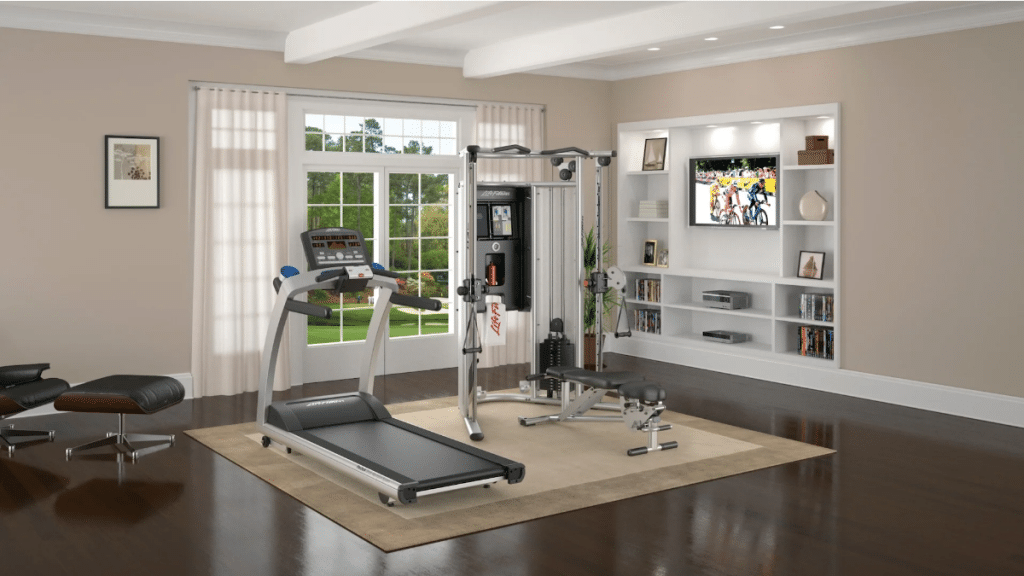Creating a safe and functional fitness space requires careful selection of gym equipment. Whether you’re setting up a personal home gym or a commercial fitness center, ensuring that the equipment is both durable and reliable is essential for long-term use. Properly sourced gym equipment not only enhances workout quality but also ensures the safety of users. This guide will walk you through the process of sourcing high-quality gym equipment, focusing on key safety features such as durability, stability, and design, and how to identify reputable suppliers.
Prioritize Durability: Invest in Long-Lasting Equipment
Durability should be one of the primary factors when sourcing gym equipment. Commercial-grade equipment, such as weight machines, cardio machines, and free weights, needs to endure heavy use and resist wear and tear. The materials used in construction play a significant role in determining the equipment’s lifespan. Steel frames, high-quality rubber, and reinforced components are signs of durability.
Look for equipment with warranties that cover a reasonable amount of time, as this is an indicator of how confident the manufacturer is in the product’s durability. Be wary of products with unusually short warranty periods or no warranty at all—these could indicate lower-quality construction. A well-built piece of equipment, such as those from Factory Weights UK, should last many years, even in high-traffic gym environments.
Stability is Key: Ensure Safety During Workouts
Stability is another critical safety feature to consider. Equipment that wobbles or shifts under load can pose a serious risk to users. Free weights, squat racks, and machines should all provide a stable base to ensure that they remain secure during exercises.
For instance, squat racks should have solid, non-slip feet and weight capacities clearly marked on them. Treadmills and ellipticals should be securely mounted and offer a smooth, steady motion. It’s essential to examine the stability of all machines and verify that they meet industry standards for safety before purchasing. This is especially important for equipment that is used for exercises involving heavy weights or high-intensity movements.
Design and Ergonomics Matter
The design of gym equipment significantly impacts both its usability and safety. Well-designed equipment should support natural body movements and minimize the risk of injury. Pay attention to features like adjustable settings, handles, and padding that enhance comfort and reduce the risk of strain.
For example, when sourcing weight machines, ensure they have adjustable seats, handlebars, and footrests to accommodate a variety of body types. Cardio machines should offer adjustable resistance and comfortable grips that help maintain a neutral body position. The equipment’s design should facilitate smooth movement throughout the full range of motion, making exercises safer and more effective.
Research Reputable Suppliers
Identifying reputable suppliers is crucial to ensuring that you are purchasing high-quality, safe gym equipment. Look for companies with established reputations in the fitness industry, ideally those that specialize in commercial-grade equipment. Established brands are more likely to provide reliable, durable products with excellent customer support.
Research customer reviews and feedback on third-party websites, forums, and social media to assess the experiences of other buyers. Supplier certifications, such as ISO 9001 or other industry standards, are also indicators of quality. Don’t hesitate to ask suppliers about their sourcing, manufacturing process, and any relevant safety certifications.
Test Equipment Before Purchasing
When possible, physically test equipment before making a purchase. This is especially important for larger, more expensive items like cardio machines or weight racks. Testing equipment allows you to evaluate its stability, ease of use, and comfort first-hand. Most reputable suppliers will have showrooms or demo units available for you to try out before committing to a purchase.
Testing the equipment ensures that it meets your specific needs and aligns with your fitness goals. It also provides an opportunity to check for any defects or issues that may not be visible in product images or descriptions. Pay attention to the feel of the equipment during use—smooth movements and sturdy construction should be your baseline expectations.
Understand the Total Cost of Ownership
While it’s tempting to focus solely on the initial cost of gym equipment, understanding the total cost of ownership is crucial. Consider factors like maintenance, repair costs, and energy consumption. Commercial gym equipment may require ongoing maintenance, such as lubrication for machines or replacement parts for cardio equipment. Some equipment may also have higher electricity consumption, so it’s important to factor in long-term costs when making your decision.
Look for equipment that is easy to maintain or comes with a clear service plan. Many manufacturers offer maintenance packages or service agreements that can help reduce long-term costs and ensure the equipment remains in top condition.
Ensure Proper Safety Features are Included
Every piece of gym equipment should include essential safety features, such as emergency stop buttons, non-slip surfaces, and clear safety instructions. Ensure that equipment is designed to reduce the risk of injury during use. For example, cable machines should have protective covers to prevent injury from exposed moving parts, and cardio machines should have easy-to-reach emergency stop buttons.
Additionally, make sure that the equipment includes adequate safety features for those who may be new to working out or unfamiliar with certain exercises. The addition of safety mechanisms, such as safety bars on squat racks or adjustable safety stops, can make the equipment safer for a wider range of users.
Take the Time to Choose Wisely
Sourcing high-quality gym equipment requires careful consideration of durability, safety features, and design. By focusing on reputable suppliers, testing equipment before purchase, and considering the total cost of ownership, you can build a safe and reliable fitness space. Whether you’re outfitting a commercial gym or setting up a home workout area, prioritizing safety and quality will ensure that your equipment lasts, performs well, and keeps users safe while working toward their fitness goals. Take your time and make informed choices to build a space that fosters success and longevity.
